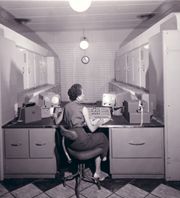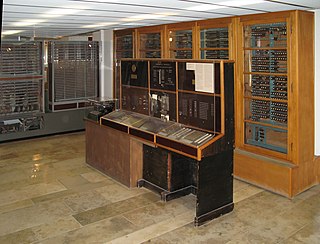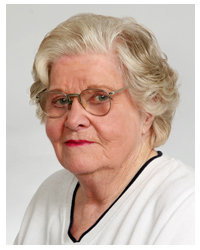Related Research Articles

In computer programming, assembly language, often referred to simply as assembly and commonly abbreviated as ASM or asm, is any low-level programming language with a very strong correspondence between the instructions in the language and the architecture's machine code instructions. Assembly language usually has one statement per machine instruction (1:1), but constants, comments, assembler directives, symbolic labels of, e.g., memory locations, registers, and macros are generally also supported.

Fortran is a general-purpose, compiled imperative programming language that is especially suited to numeric computation and scientific computing.

A programming language is a system of notation for writing computer programs. Most programming languages are text-based formal languages, but they may also be graphical. They are a kind of computer language.
PL/I is a procedural, imperative computer programming language initially developed by IBM. The PL/1 ANSI standard, X3.53-1976, was published in 1976. It is designed for scientific, engineering, business and system programming. It has been in continuous use by academic, commercial and industrial organizations since it was introduced in the 1960s.

Simula is the name of two simulation programming languages, Simula I and Simula 67, developed in the 1960s at the Norwegian Computing Center in Oslo, by Ole-Johan Dahl and Kristen Nygaard. Syntactically, it is an approximate superset of ALGOL 60, and was also influenced by the design of Simscript.

John William Mauchly was an American physicist who, along with J. Presper Eckert, designed ENIAC, the first general-purpose electronic digital computer, as well as EDVAC, BINAC and UNIVAC I, the first commercial computer made in the United States.
BINAC was an early electronic computer designed for Northrop Aircraft Company by the Eckert–Mauchly Computer Corporation (EMCC) in 1949. Eckert and Mauchly, though they had started the design of EDVAC at the University of Pennsylvania, chose to leave and start EMCC, the first computer company. BINAC was their first product, the first stored-program computer in the United States; BINAC is also sometimes claimed to be the world's first commercial digital computer even though it was limited in scope and never fully functional after delivery.

UNIVAC was a line of electronic digital stored-program computers starting with the products of the Eckert–Mauchly Computer Corporation. Later the name was applied to a division of the Remington Rand company and successor organizations.

Atari BASIC is an interpreter for the BASIC programming language that shipped with the Atari 8-bit family of 6502-based home computers. Unlike most American BASICs of the home computer era, Atari BASIC is not a derivative of Microsoft BASIC and differs in significant ways. It includes keywords for Atari-specific features and lacks support for string arrays, for example.

The UNIVAC 1100/2200 series is a series of compatible 36-bit computer systems, beginning with the UNIVAC 1107 in 1962, initially made by Sperry Rand. The series continues to be supported today by Unisys Corporation as the ClearPath Dorado Series. The solid-state 1107 model number was in the same sequence as the earlier vacuum-tube computers, but the early computers were not compatible with the solid-state successors.
MATH-MATIC is the marketing name for the AT-3 compiler, an early programming language for the UNIVAC I and UNIVAC II.
In computer science, a lookup table (LUT) is an array that replaces runtime computation with a simpler array indexing operation, in a process termed as direct addressing. The savings in processing time can be significant, because retrieving a value from memory is often faster than carrying out an "expensive" computation or input/output operation. The tables may be precalculated and stored in static program storage, calculated as part of a program's initialization phase (memoization), or even stored in hardware in application-specific platforms. Lookup tables are also used extensively to validate input values by matching against a list of valid items in an array and, in some programming languages, may include pointer functions to process the matching input. FPGAs also make extensive use of reconfigurable, hardware-implemented, lookup tables to provide programmable hardware functionality. LUTs differ from hash tables in a way that, to retrieve a value with key , a hash table would store the value in the slot where is a hash function i.e. is used to compute the slot, while in the case of LUT, the value is stored in slot , thus directly addressable.

The Ferranti Mark 1, also known as the Manchester Electronic Computer in its sales literature, and thus sometimes called the Manchester Ferranti, was produced by British electrical engineering firm Ferranti Ltd. It was the world's first commercially available electronic general-purpose stored program digital computer.

The history of programming languages spans from documentation of early mechanical computers to modern tools for software development. Early programming languages were highly specialized, relying on mathematical notation and similarly obscure syntax. Throughout the 20th century, research in compiler theory led to the creation of high-level programming languages, which use a more accessible syntax to communicate instructions.

The Z4 was arguably the world's first commercial digital computer, and is the oldest surviving programmable computer. It was designed, and manufactured by early computer scientist Konrad Zuse's company Zuse Apparatebau, for an order placed by Henschel & Son, in 1942; though only partially assembled in Berlin, then completed in Göttingen, and not delivered before the defeat of Nazi Germany, in 1945. The Z4 was Zuse's final target for the Z3 design. Like the earlier Z2, it comprised a combination of mechanical memory and electromechanical logic, so was not a true electronic computer.
The man or boy test was proposed by computer scientist Donald Knuth as a means of evaluating implementations of the ALGOL 60 programming language. The aim of the test was to distinguish compilers that correctly implemented "recursion and non-local references" from those that did not.
There are quite a few ALGOL60 translators in existence which have been designed to handle recursion and non-local references properly, and I thought perhaps a little test-program may be of value. Hence I have written the following simple routine, which may separate the man-compilers from the boy-compilers.
The Eckert–Mauchly Computer Corporation (EMCC) was founded by J. Presper Eckert and John Mauchly. It was incorporated on December 22, 1947. After building the ENIAC at the University of Pennsylvania, Eckert and Mauchly formed EMCC to build new computer designs for commercial and military applications. The company was initially called the Electronic Control Company, changing its name to Eckert–Mauchly Computer Corporation when it was incorporated. In 1950, the company was sold to Remington Rand, which later merged with Sperry Corporation to become Sperry Rand, and survives today as Unisys.

EuLisp is a statically and dynamically scoped Lisp dialect developed by a loose formation of industrial and academic Lisp users and developers from around Europe. The standardizers intended to create a new Lisp "less encumbered by the past", and not so minimalist as Scheme. Another objective was to integrate the object-oriented programming paradigm well. It is a third-generation programming language.

Jean Bartik was one of the original six programmers for the ENIAC computer.
The GEC 2050 was an 8-bit minicomputer produced during the 1970s, initially by Marconi Elliott Computer Systems of the UK, before the company renamed itself GEC Computers Limited. The first models were labeled MECS 2050, before being renamed GEC 2050.
References
- ↑ Sebesta, R. W. Concepts of Programming languages. 2006; M6 14:18 pp. 44. ISBN 0-321-33025-0.
- ↑ Sebesta, R. W. Concepts of Programming languages. 11E; Chapter 2, pp. 39. ISBN 978-0133943023.
- ↑ Schmitt, William F. The UNIVAC SHORT CODE. Annals of the History of Computing (1988) 10:pages 7–8.
- ↑ Schmitt, William F. The UNIVAC SHORT CODE. Annals of the History of Computing (1988) 10:page 15.
- ↑ Malik, Masud Ahmad. Evolution of the High Level Programming Languages: A Critical Perspective. ACM SIGPLAN Notices (December 1998) 33(12) page 74.